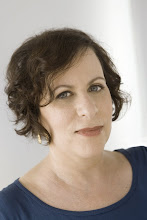More On Photographic Plagiarism

(l) Jason Florio for AARP (r) Matthew Mahon for Fast Company
If one writer steals another’s words it’s called plagiarism. If it happens at a magazine, a newspaper, during a speech, or anywhere it’s public, the plagiarizer is called out and usually loses his or her job. The company moves quickly to regain credibility.
Why is it wrong to steal someone's words, but not equally wrong to steal a photographer’s signature visual aesthetic? I can’t claim Hemingway’s words as my own, why should one photographer claim another’s work as their own, or be willing to copy it? For me the problem is both with photographers cannibalizing each other, and lazy (or worse) creatives (photo editors and art directors) who seem to have a strange view of right and wrong.
I bring this up again because there is more to tell about this issue--that Fast Company had hired photographer Matthew Mahon to shoot in the exact signature style of Jason Florio.
After my first post there was some back and forth with photographers on FB and in comments to the post. Some didn't think it was a big deal since it happens "all the time." One photographer said, "I thought it was irresponsible to point a finger at him without getting feedback from Fast Company. As it is now, everywhere that that Mahon guy goes, there's now a black cloud over him. That's all that anyone remembers. No matter the truth, "the Mahon guy ripped off someone else"; that's all that anyone remembers."
I don’t know if that’s true, but I had emailed the photographer, hoping to hear his side of the story—he never responded. I also emailed the agency he works for (Redux), and the photo editor of Fast Company (Leslie Dela-Vega). Marcel Saba of Redux asked me to speak with the magazine.
Leslie Dela-Vega emailed me back and said, "Just so you have all the facts, Matthew was directed to shoot with this background and this was in no way his idea. Thanks for your concern." (abbreviated for relevance)
I spoke with Florian Bachleda, the Creative Director of Fast Company after he spoke with Jason Florio (at Jason’s request). What Bachleda said was this: “We screwed up and got careless and sloppy. There was no intent to harm Jason intentionally. He’s good with us and we’re good with him. Hopefully we’ll be working on a project with him.”
I spoke in detail with Jason Florio and he wrote this:
"As photographers we want to be known for our voice, our vision..that is what makes us unique as artists and makes us not just mere widget makers.
So when I was told by a fellow photographer that a style and particular visual technique I am known for, (published globally, acquired by a museum, won awards for...)had been been directly copied for a magazine story, I felt gutted.
But hey, as artists we are influenced by and inspired by predecessors and peers. But, I also thought, what the hell is the point of creating a personal style when an art director/photo director can just tell another photographer to "copy this"?
Legally as photographers we don't have much to go on as far a recompense. In this instance, although the damage is done, I was able to get some insight and closure by talking directly with the photo and art team at Fast Company. They admitted that they had seen my work in Resource Magazine and directed the photographer to copy it.
One part of me was flattered and the other irate, but they put their hands up to appropriating the style and admitted for them it had been a quick visual solution for their story. They said they were unfamiliar with my work until this point. Now they are interested in working with me.....
So although I can't get Alan Dershowitz to represent me and sue for millions, there may be a silver lining in all of this by acquiring a new client."
I guess one of the dirty little secrets in the industry is that photographers are asked to copy other photographers, they agree to copy other photographers, and photo editors/art directors see nothing wrong with doing this.
Photographers fear being branded as troublemakers. Other bloggers have raised this issue when it applied to commercial or fine art photography, but this was the first time I was made aware of plagiarism as it relates to editorial photography.
There is a difference between “influenced by” and “copying of” and we all know it. We are all a sum total of everything that we experience, see and consume. But the whole point of being a creative person is to digest it all and come up with your own individual expression.
Picasso was influenced by Matisse. But you would never confuse the two.
As a former photo editor I am angered by that same lazy thinking. It’s not as if Fast Company asked Jason Florio to do the shoot, and because he was busy they had to go to someone else. And for the photographer to not propose an alternative that fit more squarely with his own style is sad. If you’re just going to regurgitate what you’ve seen, or copy what others do, what is the point?
For the photo industry to survive and thrive it is important not to cannibalize each other’s work. If getting a job is more important than putting your unique point of view out there I feel sorry for you. Why are you a photographer? If you’re in a creative industry be creative. Your integrity should not be for sale.
Labels: fast company, florian bachleda, jason florio, leslie dela vega, matthew mahon, photography plagiarism, redux, stella kramer, stellazine











